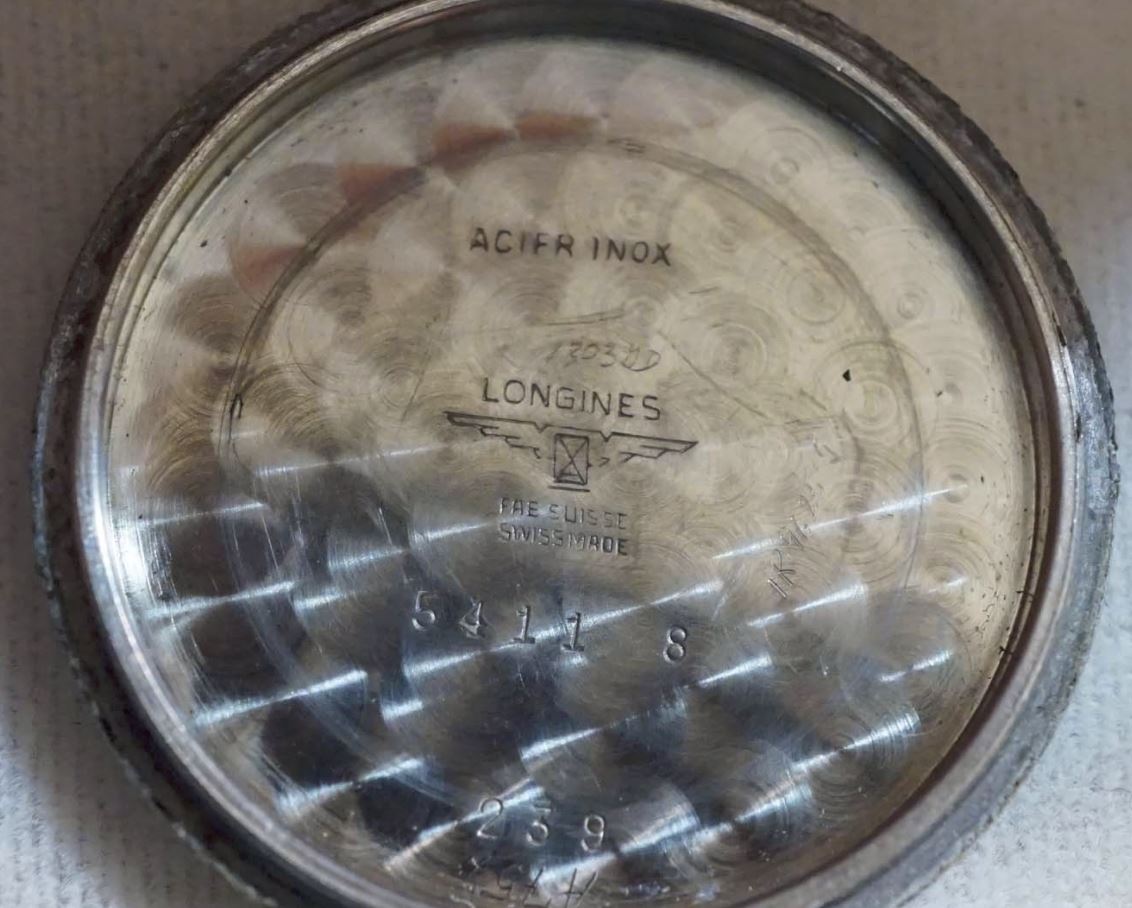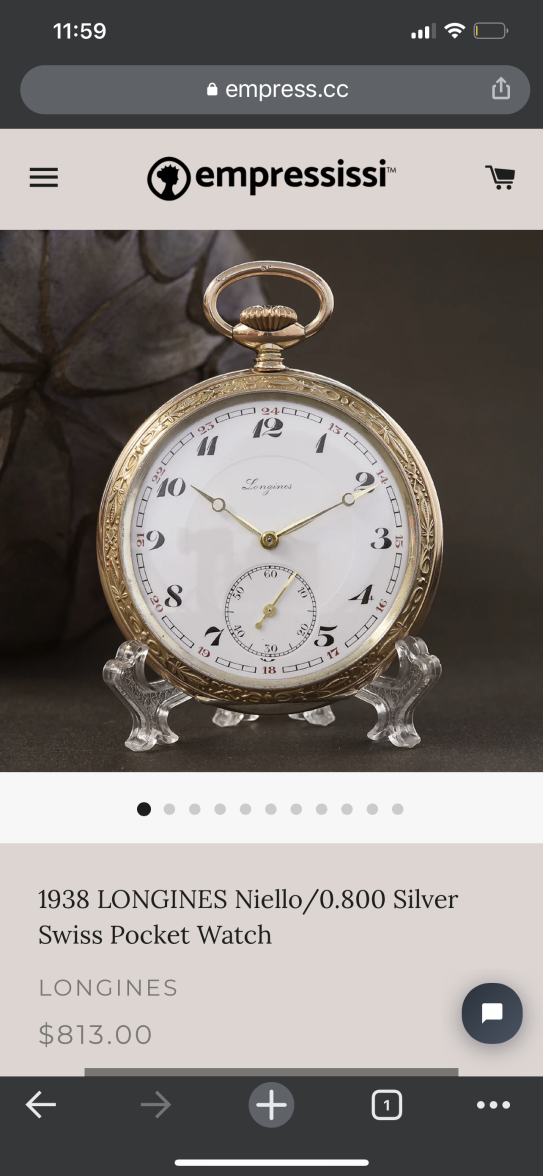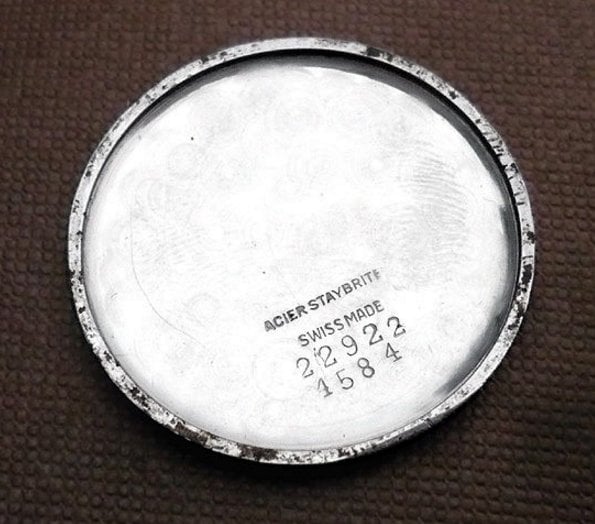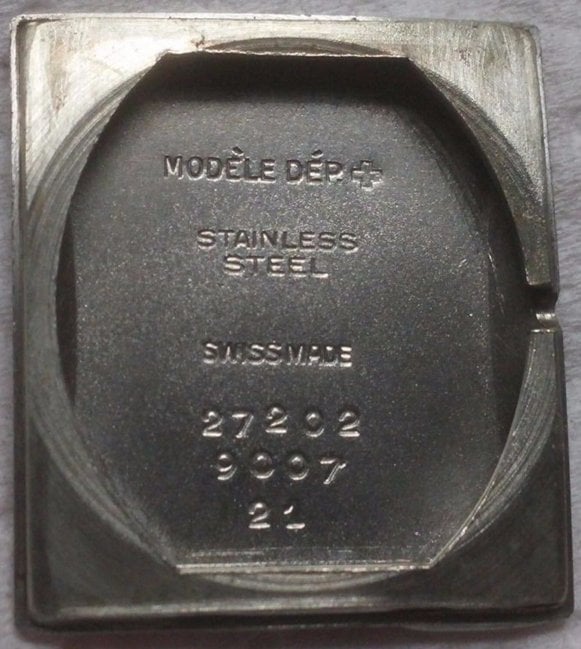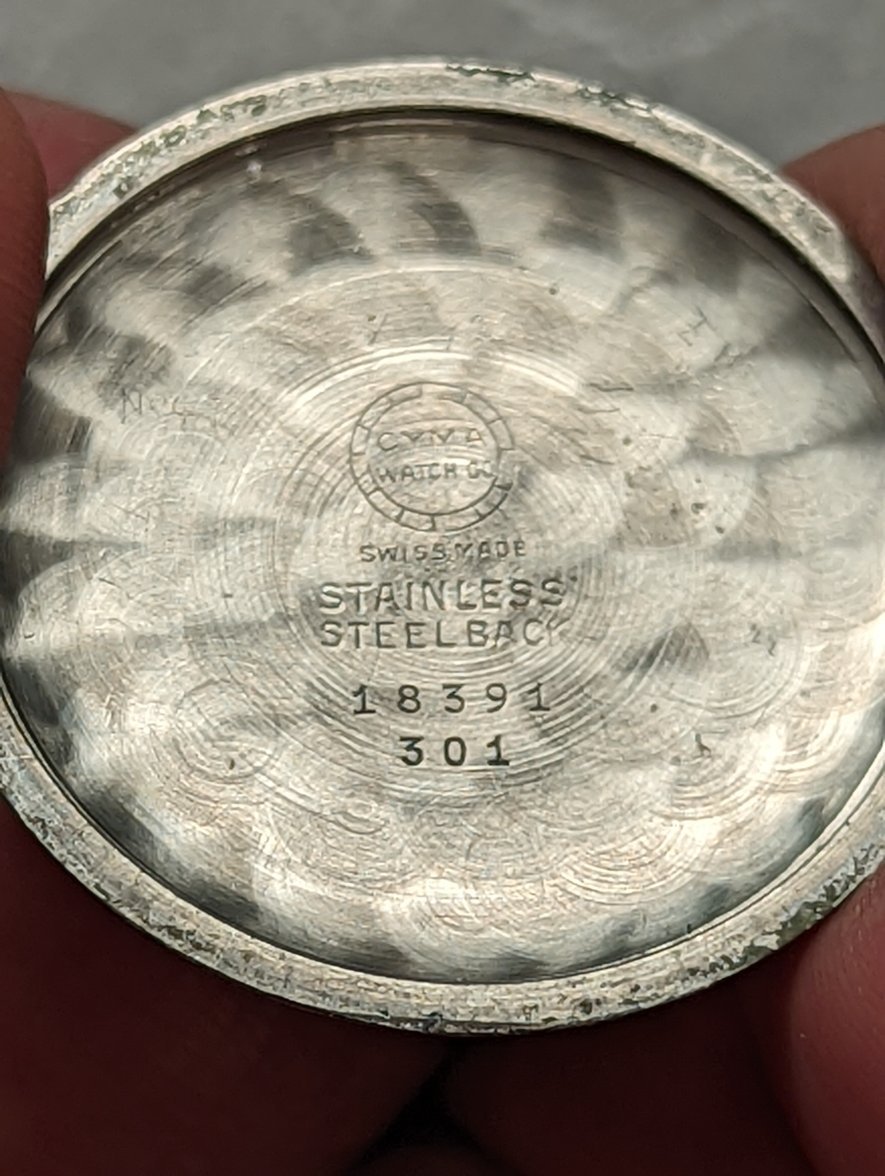DirtyDozen12
··Thanks, mystery donor!This thread is not intended to be a comprehensive account of the case numbers that appear on Longines watches. Instead, I hope that this abridged account will provide readers with a useful overview of the topic. Additionally, it should be noted that, throughout its history, Longines produced watches with locally-made (i.e. not Swiss) cases. This overview will not address locally-made cases.
1. The era of serial numbers: 0 to circa 5'000'000
Longines began its consecutive serial number system in 1867. On many early Longines pocket watches, the only immediately visible serial number on the watch is found on the inside of its case-back. See Figure 1. Serial numbers continued to be the predominant case-back marking into the 1930s.
Fig. 1. Silver-cased caliber 20B, invoiced in 1894.
2. The era of order numbers: circa 5'000'000 to circa 8'000'000
Some time in the early to mid-1930s, Longines began to mark some of its cases with order numbers. Confusingly, Longines seemed to use two different order number systems simultaneously. One system used 5-digit order numbers, while the other used 4-digit order numbers. Along with an order number, cases were marked with an individual number within the order. See Figures 2 and 3. Though I will have to check my records to confirm, these systems began around 18'000 and 1'000, respectively. Notably, solid gold cases continued to be marked with serial numbers into the early 1940s. See Figure 4. By the early 1950s, order numbers had largely been phased out. Again, I will have to check my records to confirm, but the highest order numbers I recall are around 23'800 and 3'400.
Fig. 2. Stainless steel reference 3645, caliber 25.17, invoiced in 1936.
Fig. 3. Stainless steel reference 3541, caliber 10.68Z, invoiced in 1936.
Fig. 4. 14K gold reference 4178, caliber 27.0, invoiced in 1940
3. The era of reference numbers: circa 8'000'000 to circa 15'000'000
Starting in the mid-1940s, 4-digit reference numbers began to appear on some case-backs. These reference numbers are generally between 5000 and 6000. As mentioned in section 2, reference numbers became the predominant case-back marking by the early 1950s. Along with a reference number, cases were usually marked with an "iteration number" and an individual number. See Figures 5 and 6. I am using the term "iteration number" to refer to the number beside the reference number. Though there are exceptions, it seems that earlier examples of a given reference tend to have lower iteration numbers than later examples.
Fig. 5. Stainless steel reference 5411, caliber 12.68Z, invoiced in 1952.
Fig. 6. Stainless steel reference 5356, caliber 12.68Z, invoiced in 1956.
4. The second era of serial numbers: 15'000'000 to present(?)
According to Stéphanie Lachat's book entitled, Longines through Time, The Story of the Watch, Longines began to mark its cases with serial numbers in 1969, once again. As far as I know, the 8-digit serial numbers should appear on the outside of the case-back. Case-backs from around this time seem to also have 4-digit reference numbers marked on the inside. See Figure 7. Beyond the early 1970s, I am entirely out of my depth, so feel free to contribute to the information presented thus far.
Fig. 7. Stainless steel reference 8271, caliber 332, source: https://omegaforums.net/threads/longines-30ch-530-numbering.93404/#post-1212916
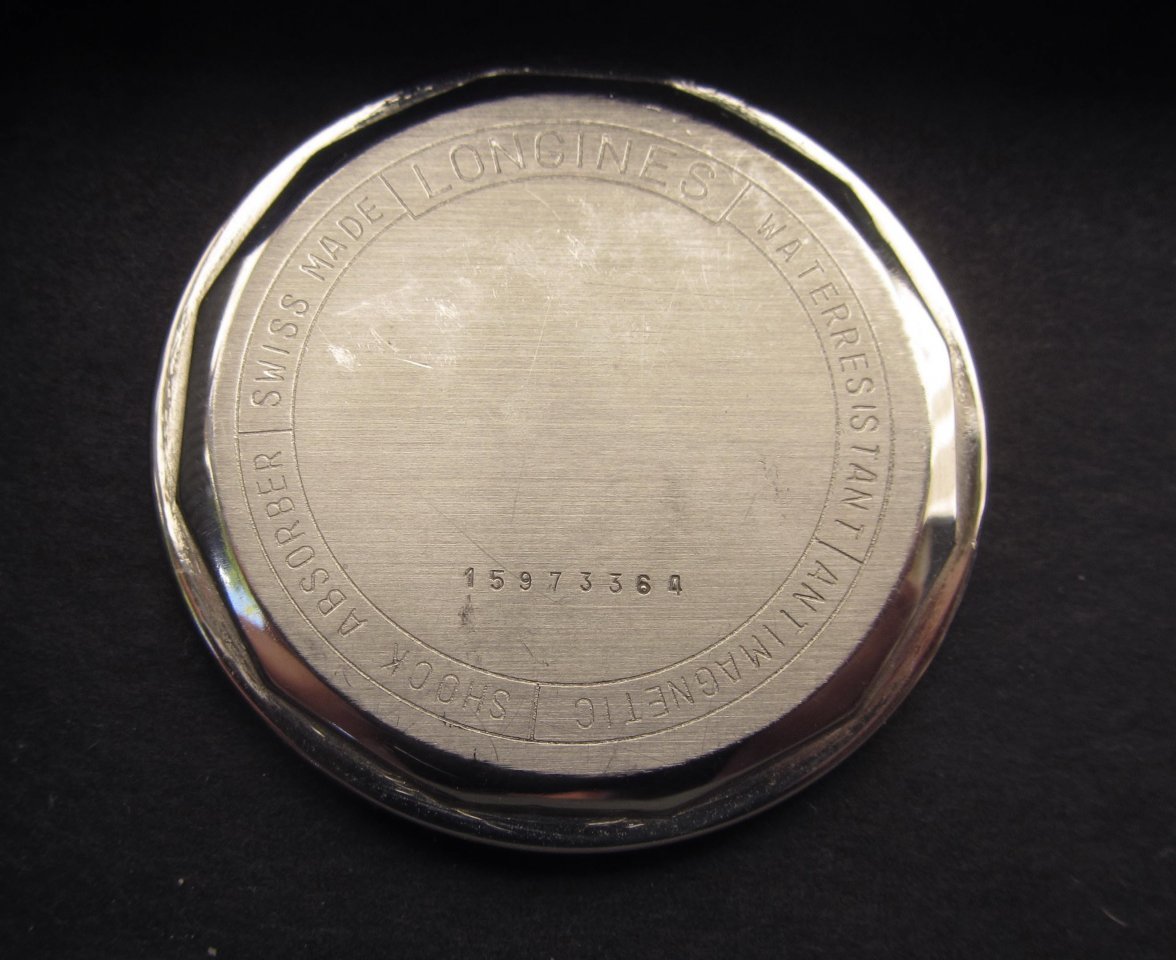
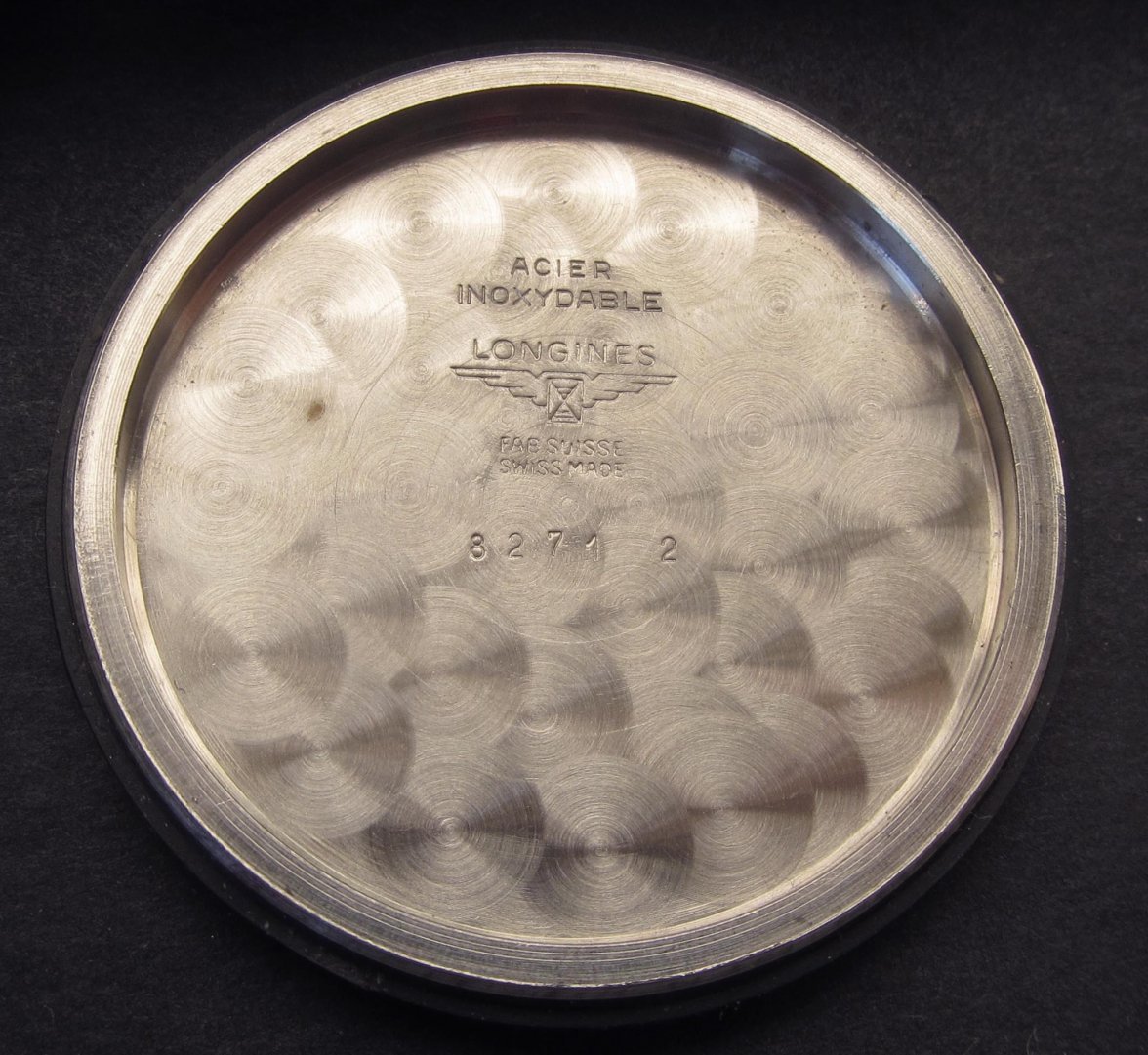
1. The era of serial numbers: 0 to circa 5'000'000
Longines began its consecutive serial number system in 1867. On many early Longines pocket watches, the only immediately visible serial number on the watch is found on the inside of its case-back. See Figure 1. Serial numbers continued to be the predominant case-back marking into the 1930s.
Fig. 1. Silver-cased caliber 20B, invoiced in 1894.
2. The era of order numbers: circa 5'000'000 to circa 8'000'000
Some time in the early to mid-1930s, Longines began to mark some of its cases with order numbers. Confusingly, Longines seemed to use two different order number systems simultaneously. One system used 5-digit order numbers, while the other used 4-digit order numbers. Along with an order number, cases were marked with an individual number within the order. See Figures 2 and 3. Though I will have to check my records to confirm, these systems began around 18'000 and 1'000, respectively. Notably, solid gold cases continued to be marked with serial numbers into the early 1940s. See Figure 4. By the early 1950s, order numbers had largely been phased out. Again, I will have to check my records to confirm, but the highest order numbers I recall are around 23'800 and 3'400.
Fig. 2. Stainless steel reference 3645, caliber 25.17, invoiced in 1936.
Fig. 3. Stainless steel reference 3541, caliber 10.68Z, invoiced in 1936.
Fig. 4. 14K gold reference 4178, caliber 27.0, invoiced in 1940
3. The era of reference numbers: circa 8'000'000 to circa 15'000'000
Starting in the mid-1940s, 4-digit reference numbers began to appear on some case-backs. These reference numbers are generally between 5000 and 6000. As mentioned in section 2, reference numbers became the predominant case-back marking by the early 1950s. Along with a reference number, cases were usually marked with an "iteration number" and an individual number. See Figures 5 and 6. I am using the term "iteration number" to refer to the number beside the reference number. Though there are exceptions, it seems that earlier examples of a given reference tend to have lower iteration numbers than later examples.
Fig. 5. Stainless steel reference 5411, caliber 12.68Z, invoiced in 1952.
Fig. 6. Stainless steel reference 5356, caliber 12.68Z, invoiced in 1956.
4. The second era of serial numbers: 15'000'000 to present(?)
According to Stéphanie Lachat's book entitled, Longines through Time, The Story of the Watch, Longines began to mark its cases with serial numbers in 1969, once again. As far as I know, the 8-digit serial numbers should appear on the outside of the case-back. Case-backs from around this time seem to also have 4-digit reference numbers marked on the inside. See Figure 7. Beyond the early 1970s, I am entirely out of my depth, so feel free to contribute to the information presented thus far.
Fig. 7. Stainless steel reference 8271, caliber 332, source: https://omegaforums.net/threads/longines-30ch-530-numbering.93404/#post-1212916






